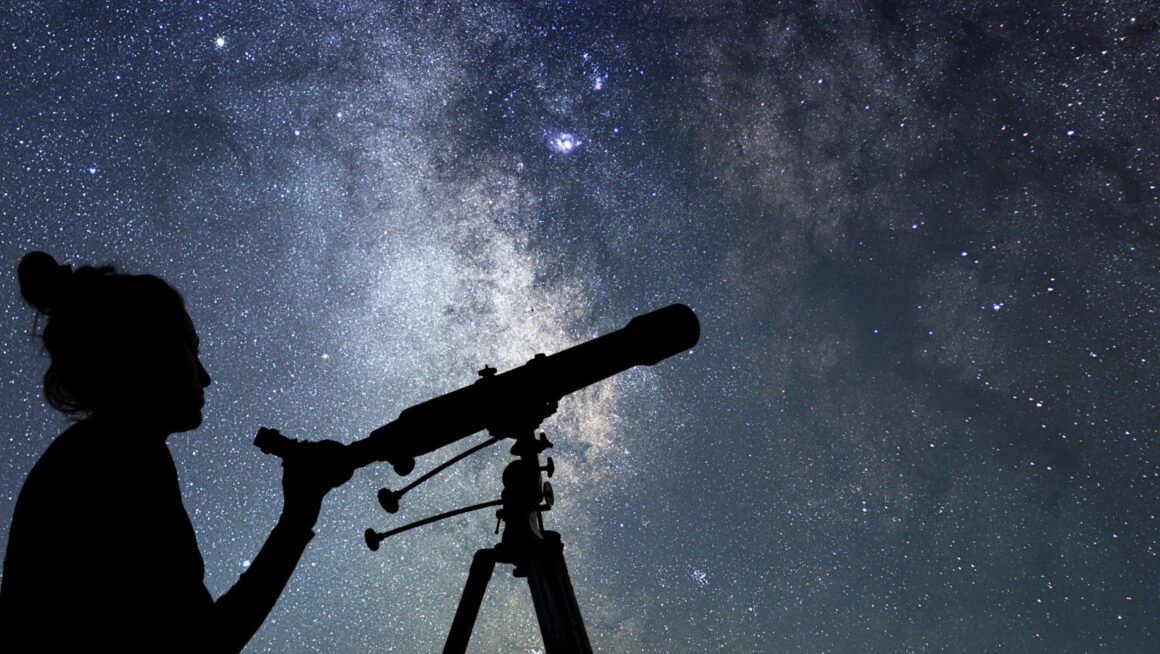Astrophotography has long been a dream for many stargazers, but the reality of capturing stunning images of the night sky often comes with a steep learning curve. Traditional astrophotography requires complex equipment, precise calibration, and a deep understanding of both photography and astronomy. For beginners, this can be intimidating and even discouraging. But thanks to smart telescopes, those barriers are quickly disappearing. These innovative devices are making it possible for anyone to take breathtaking photos of the stars, regardless of their experience level. Let’s explore how smart telescopes are revolutionising astrophotography, making it accessible and enjoyable for beginners.
Simplified Setup: No More Complex Equipment or Calibration
One of the biggest challenges in traditional astrophotography is the setup process. Aligning a telescope, adjusting various settings, and calibrating the equipment can be overwhelming, especially for someone just starting out. Smart telescopes, however, are designed to simplify this process.
With smart telescopes, there’s no need to worry about complex setup procedures. These devices often come with automatic alignment features, which means you can start capturing images with just a few taps on your smartphone or tablet. The smart telescope will automatically find its position, calibrate itself, and track celestial objects for you. This all-in-one design not only saves time but also reduces the frustration that often comes with traditional setups. Beginners can now focus on enjoying the experience rather than getting bogged down by technical details. You can view a collection of high quality smart telescopes by clicking on the ink.
Smart Imaging Features: Enhancing Photo Quality Without the Learning Curve
Capturing clear, detailed images of the night sky typically requires a deep understanding of photography techniques like exposure, focus, and noise reduction. For beginners, mastering these techniques can take years. Smart telescopes, however, come equipped with advanced imaging features that take care of these complexities for you.
These devices automatically adjust exposure, focus, and other settings to optimise image quality, allowing you to capture stunning photos without needing to manually tweak every parameter. Additionally, many smart telescopes include built-in noise reduction and image processing algorithms that enhance the clarity and detail of your photos. Some models even offer guided imaging sessions through companion apps, where you can follow step-by-step instructions to capture specific celestial objects. This means you can achieve professional-looking results right from the start, without spending hours learning about ISO settings or exposure times.
Real-Time Object Recognition: Instantly Identifying and Capturing Celestial Bodies
One of the most exciting features of smart telescopes is their ability to recognize and track celestial objects in real-time. Traditional astrophotography often requires hours of research to identify and locate objects in the night sky. But with smart telescopes, this process is streamlined through AI-powered object recognition.

As you explore the night sky, the smart telescope instantly identifies stars, planets, and other celestial bodies, providing you with real-time information about what you’re seeing. This allows beginners to focus on capturing the perfect shot without the need for extensive research. The instant feedback not only makes the experience more enjoyable but also serves as a powerful educational tool. As you photograph different objects, you’ll learn about their characteristics, origins, and significance, deepening your understanding of the universe with every click.
Tips for Choosing the Right Telescope
Are you having doubts about what brand and model of telescope you should buy? While it can help to choose famous brands or models with many positive reviews, the reality is that everybody wants something different. While recommendations are great, you still have to analyse the details yourself to get the right telescope. Here are a few things you should think about, which can help you choose the perfect telescope for your needs.
Your Intention
First of all, consider why you’re buying a telescope. This is going to help you narrow down your options and buy a model that’s going to have suitable features for astronomy, terrestrial viewing or astrophotography. Otherwise, you could buy a telescope with a lot of features you don’t use, which can be more expensive. If you have various hobbies, you’ll want to explore versatile telescopes that offer you a bit of everything. If you’re new, make sure you do your research and don’t simply buy the first telescope you see. Again, this isn’t cheap equipment and you don’t want to make a mistake.
Your Budget
Of course, you have to think financially and what’s going to be suitable for your wallet or purse. Always have a budget in mind when you’re choosing a telescope. You can find that the price will vary from affordable to very expensive for this type of equipment. It would be best if you thought about what you can afford comfortably so that you don’t get yourself into trouble. Some companies will offer finance options, which you can explore. But, you still have to buy within your means.
Your Location
Where do you plan on using a telescope? If this is the equipment you’re going to enjoy at home, you can choose any model. But, if you want to bring a telescope on vacation and when you’re road-tripping, you’ll need to think about the design carefully.

Indeed, it’ll have to be portable and lightweight. Think ahead and try to anticipate when it will be used.
Conclusion
Smart telescopes are truly revolutionising the world of astrophotography, making it possible for beginners to capture stunning images of the night sky with ease. From simplified setup and smart imaging features to real-time object recognition and unparalleled portability, these devices remove the traditional barriers to entry and open up the wonders of the universe to everyone.

